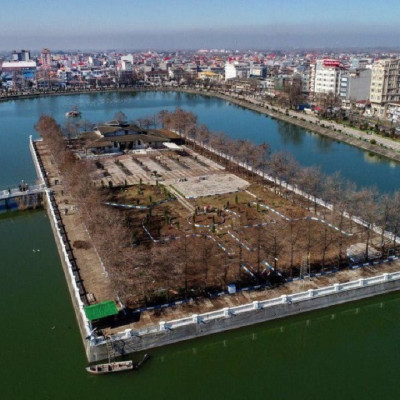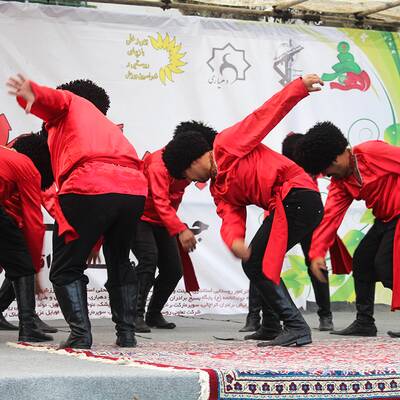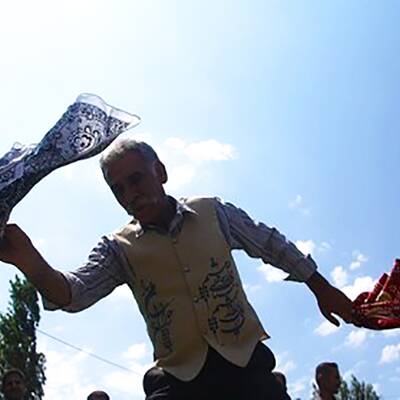
Gilani Dance (Qasemabadi)
Ghasemabadi dance is one of the traditional dances in Iran. This dance has been performed by women or men from the past until now. It has spread from the east of Gilan to other parts of the province and some neighboring provinces. It remains among the people of these areas. What is known today as Ghasemabadi dance is a dance for Gilak women, from Ghasem Abad village, with beautiful colorful clothes inspired by the colors of the beautiful nature of the province. People often dance with a combination of happy local songs and music of Gilaki and Ghasemabadi. Women wear the local dress of Ghasem Abad village, which includes a hedge belt in different colors, a shirt that extends almost to the waist, a vest, a long scarf (including two parts of the headband and a hand-woven lace scarf), and with movements and rotations of the skirt. They double the beauty of this dance. The use of colors in their clothes is different for single and married people.
Ghasemabadi dance is closely related to the environment and the type of livelihood activities of Gilan women. This dance is one of the types of movements that the natives of Gilan perform at the beginning of the cultivation season to praise and thank their Lord in the celebration such as local harvests and weddings in most villages. The dance is performed in three stages as a symbol of planting, caring, and harvesting crops in the north of Iran. The dancers begin the dance by praying to the Lord to thank them for the opportunity to cultivate. After the praying, the "planting" section is performed with rapid movements and rotations in a large circle. The second stage, the "had" stage, continues with slower rotations in a small circle. Dancers in the "harvest" stage, which symbolizes the separation of the grain from the stem and husk of the rice, continue to dance in circles which is smaller than the second stage, almost fixed at one point. Some people also use narrow waist cups between their fingers and stir them with a specific skill to give the sound of their encounter with local music, a special vibrancy to the dance and thus adjust the rhythm of the dancer.
Gilan folk songs can usually be divided into several groups: heroic, epic, descriptive, romantic, childish and lullaby, religious, and Nowruz singing, which are songs that are accompanied by local dance. Today, most of Gilan's local dances are mostly referred to as Gilan's local traditions and rituals.
.jpg)
.jpg)
.jpg)
.jpg)


